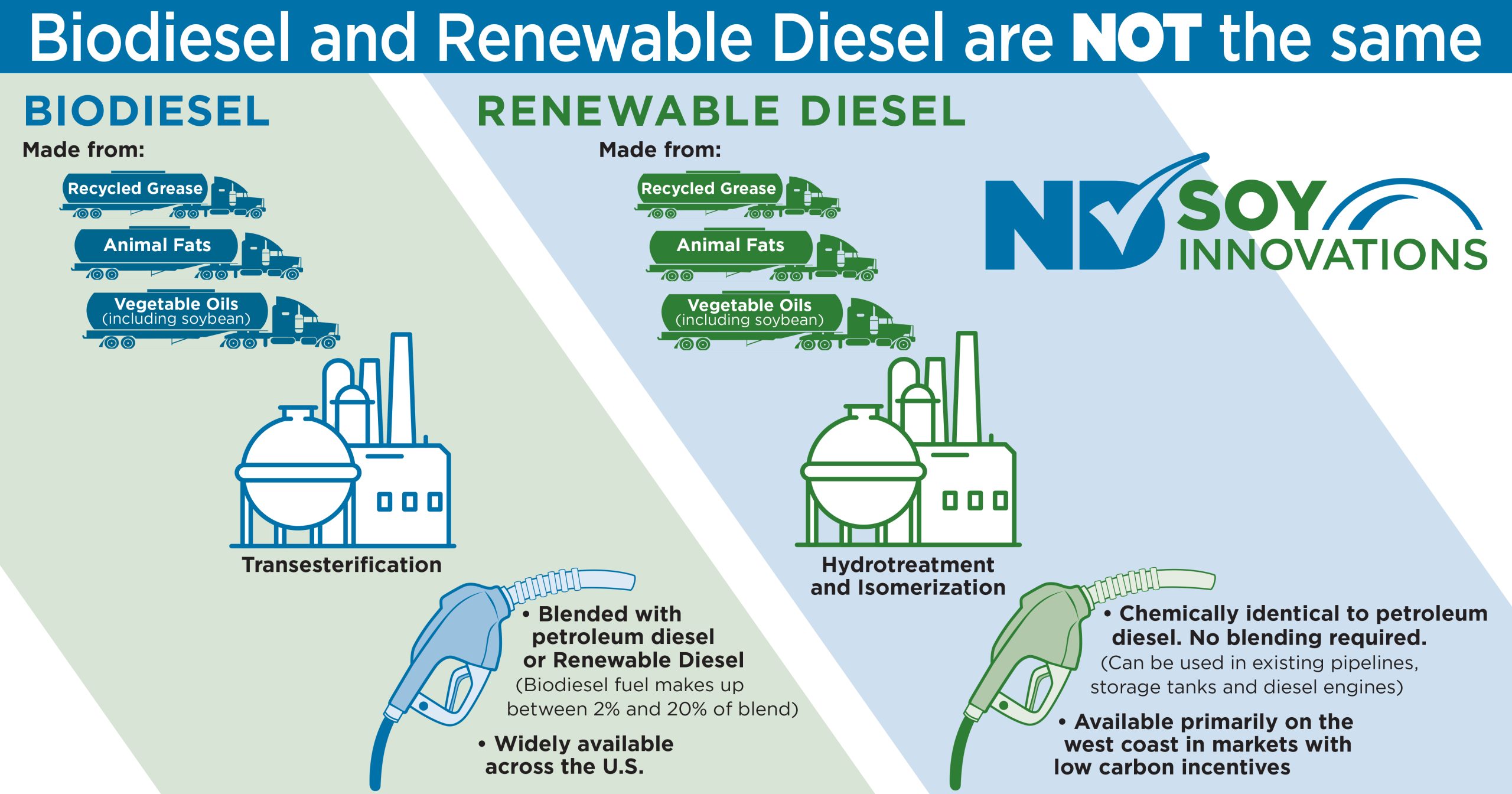
Biofuels
Biodiesel
What is biodiesel? Biodiesel is a renewable fuel made from domestic, renewable sources like soybean oil. Diesel engines can run blends up to 20 percent biodiesel with no modifications.
Why should I consider using biodiesel? Biodiesel improves diesel’s lubricity, which saves wear and tear on engines in valuable farm machinery, trucks, marine equipment and passenger vehicles.
The biodiesel industry has a fuel quality program (www.bq-9000.org) that enforces stringent ASTM specifications on fuel production to ensure that only high-quality fuel goes in to your tanks.

According to the U.S. Environmental Protection Agency (EPA), biodiesel reduces greenhouse gas emissions by up to 86 percent when compared to petroleum diesel. For every unit of fossil energy it takes to produce biodiesel, 3.5 units of renewable energy are returned (the best of any U.S. fuel).
Want to know more? Visit CleanFuels.org. For questions and assistance about diesel and biodiesel, call the Diesel Helpline at 800-929-3437 or email info@megcorpmn.com
Renewable Diesel
What is the difference between renewable diesel and biodiesel?
| Biodiesel | Renewable Diesel |
|---|---|
| Transesterification Process: Fat/oil + alcohol = biodiesel + glycerin | 2 Part Hydrotreating Process A) Fat/oil + hydrogen = saturated hydrocarbon + water + propane or CO2 B) Saturated hydrocarbon + isomerization = renewable diesel |
| Lower cost to produce | Higher capital cost, plants generally much larger |
| Ultra-low sulfur, zero aromatic, non-toxic and high cetane | Ultra-low sulfur, zero aromatic and very high cetane |
| Can be used in all engines: Often blended with petroleum diesel | Can be used in all engines: Nearly chemically identical to petroleum diesel, no blending |
| Made to meet the requirements of ASTM B5, B6-B20, and B100 blends | Made to meet the requirements of all ASTM blends |

How is renewable diesel used? Biodiesel often (but not always) requires blending prior to use; blends are often 20% biodiesel and 80% petroleum diesel (or less in colder weather).
In contrast, renewable diesel does not require blending. The two fuels are often used in combination to capture benefits from both biodiesel and renewable diesel; for example, an 80% renewable diesel 20% biodiesel blend.
Where can I find renewable diesel? Most renewable diesel produced in the U.S. is transported to states with energy initiatives to help meet their lowered emissions goals.
North Dakota is the #2 state in the U.S. in renewable diesel production.
Soy-Based Biofuels are:
Good for farmers: Based on current soybean prices, research has shown that biodiesel and renewable diesel add more than $1 of value to every bushel of soybeans grown in the U.S.
Good for North Dakota: Soybeans are a major industry in North Dakota, valuing over $2 billion in 2020. Biodiesel and renewable diesel are leading-edge fuels that support North Dakota’s economy.
Visit cleanfuels.org to discover how farmers are working to build and expand the renewable fuels industry.
